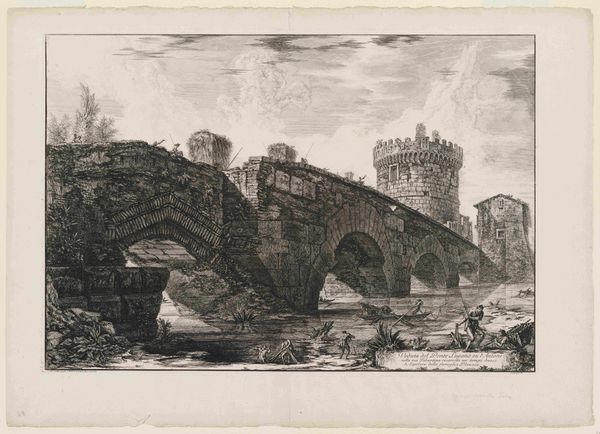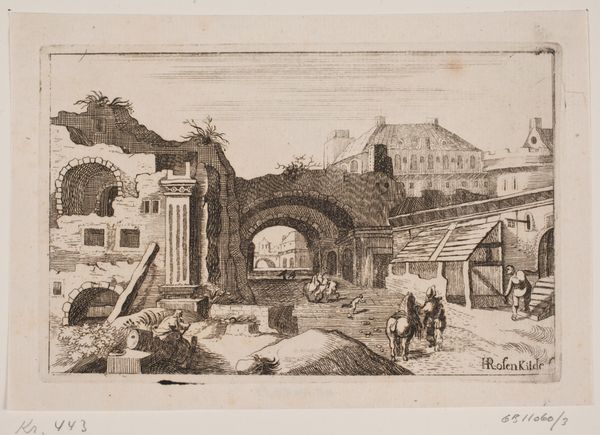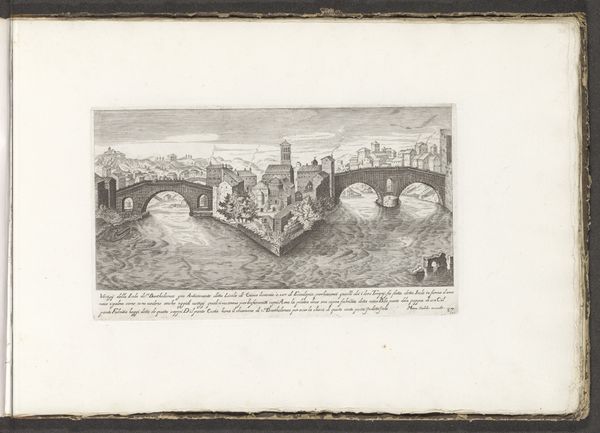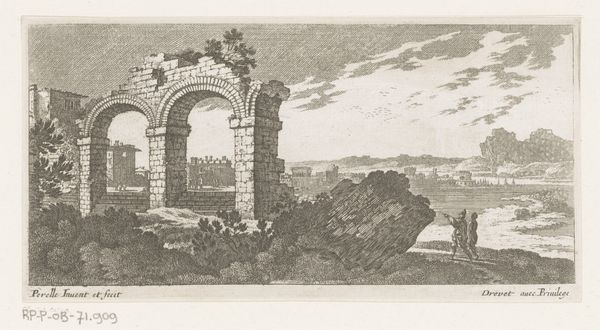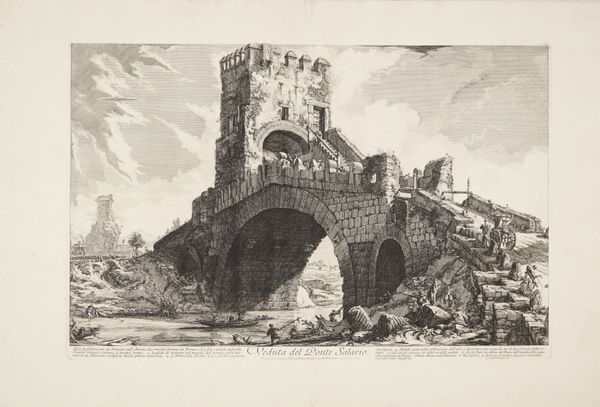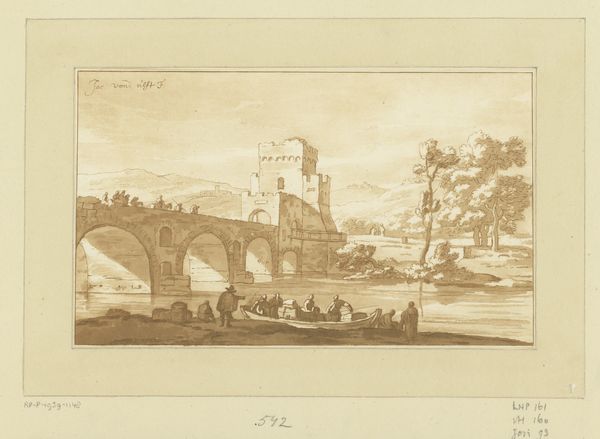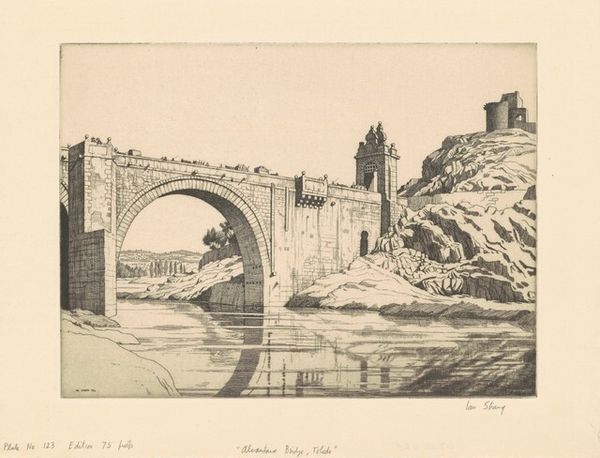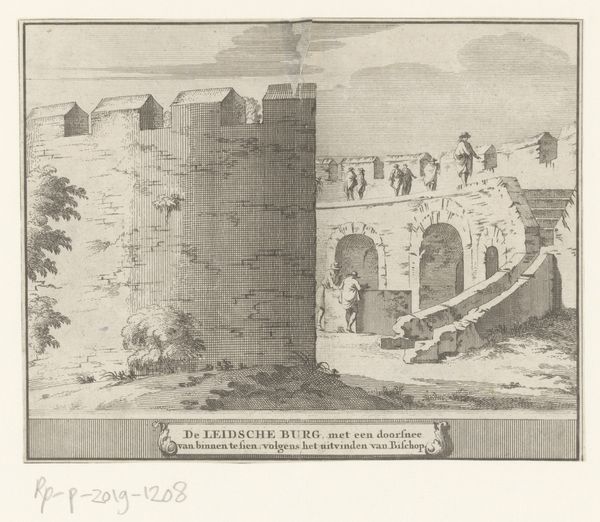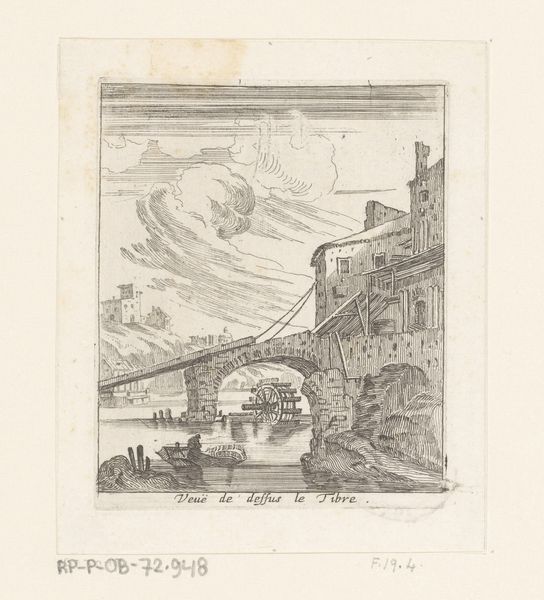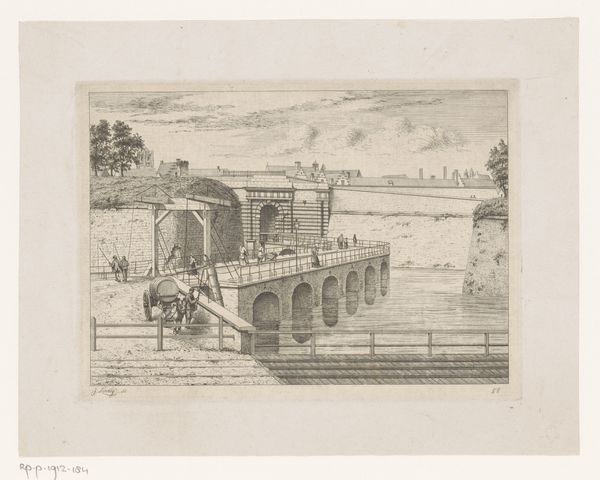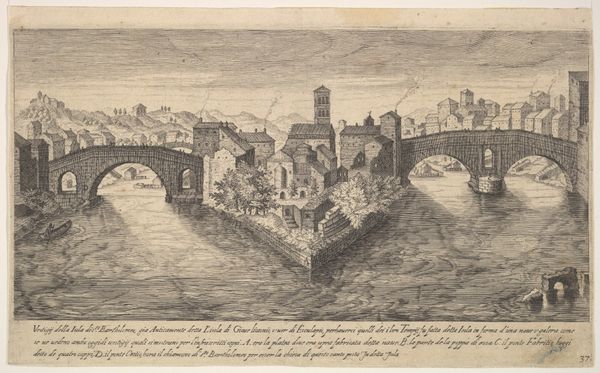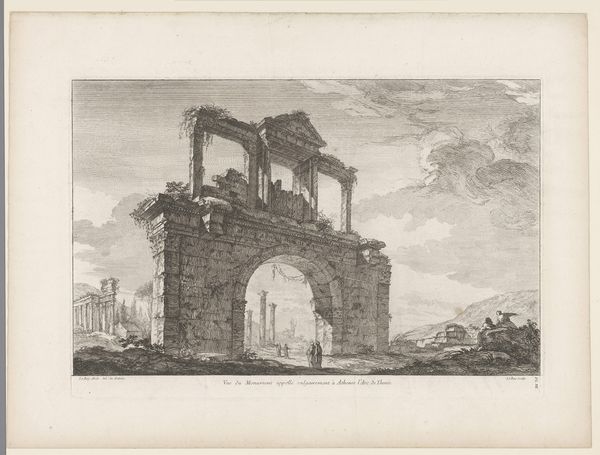
Gezicht op de Pont Neuf met daarachter de Pont-au-Change 1631 - 1661
0:00
0:00
israelsilvestre
Rijksmuseum
drawing, print, etching, paper, ink, engraving
#
drawing
#
baroque
# print
#
etching
#
landscape
#
paper
#
ink
#
cityscape
#
engraving
Dimensions: height 78 mm, width 140 mm
Copyright: Rijks Museum: Open Domain
Israel Silvestre created this print of the Pont Neuf and the Pont au Change in Paris using etching techniques. It shows how printmaking, as a technology, could represent the city as an ordered, rational space. Made in France in the mid-17th century, the image reflects the cultural and political transformations of the era. The bridges, as key architectural achievements, were not only functional but also symbolic of royal power and urban progress. The level of detail suggests a desire to document and celebrate the city's infrastructure. Silvestre's work aligns with the broader artistic trends of the time, where artists were increasingly commissioned to produce images that served the interests of the state, promoting a sense of national identity. Historical archives, city plans, and period documents can help us contextualize this image within the urban development and political ambitions of the time. By looking at art through a social and institutional lens, we can better understand its role in shaping and reflecting cultural values.
Comments
No comments
Be the first to comment and join the conversation on the ultimate creative platform.
